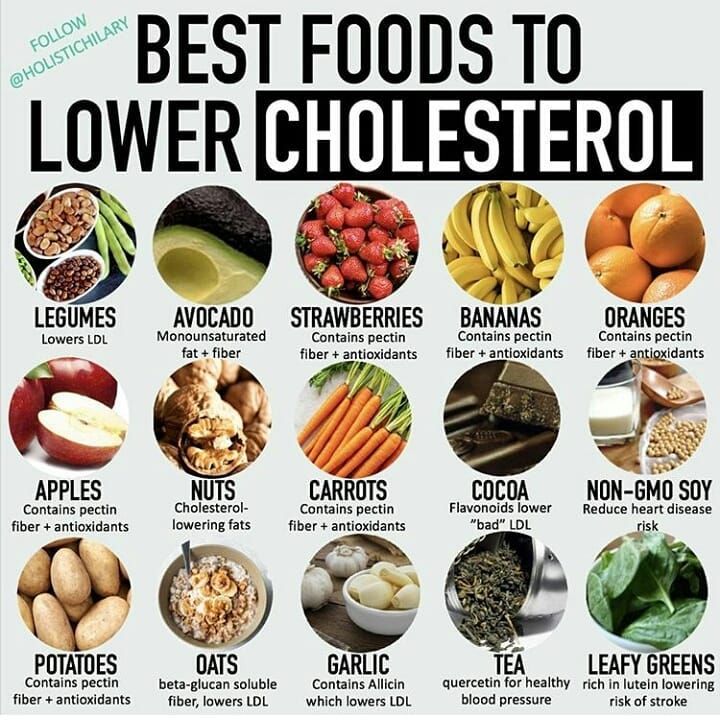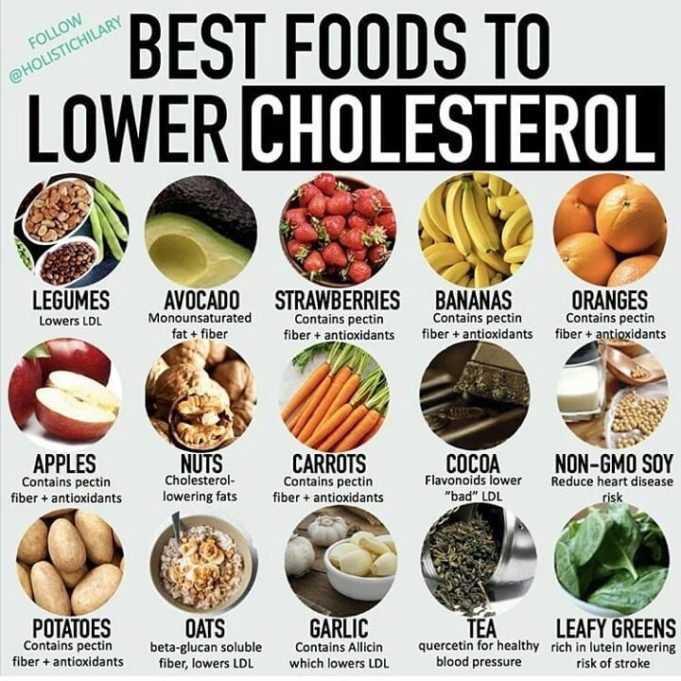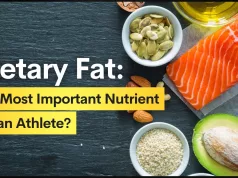How to lower cholesterol with diet? It’s a question that many of us ask, especially when faced with the daunting task of changing our eating habits. But fear not, dear reader, for we’re about to embark on a journey to discover how simple tweaks to your plate can lead to a healthier heart.
Think of it as a culinary adventure where every bite is a step towards better health! We’ll dive into the world of cholesterol, exploring the good, the bad, and the ugly. Then, we’ll arm you with strategies to make those dietary changes stick, because let’s be honest, no one wants to be stuck eating bland, boring food forever.
Imagine a world where your arteries are happy, your energy levels are soaring, and your heart is singing with joy. This isn’t just a dream; it’s a reality within reach. With a little bit of knowledge and a whole lot of deliciousness, we’ll conquer cholesterol and pave the way for a healthier, happier you.
Understanding Cholesterol
Cholesterol is a waxy, fat-like substance found in all cells of the body. It’s essential for building healthy cell membranes, producing hormones, and making vitamin D. But too much cholesterol can be a problem.
Types of Cholesterol
There are different types of cholesterol, each with a different role in the body.
- Low-density lipoprotein (LDL)is often called “bad” cholesterol because high levels can build up in the arteries, increasing the risk of heart disease.
- High-density lipoprotein (HDL)is known as “good” cholesterol because it helps remove LDL cholesterol from the arteries and transport it to the liver for processing.
- Triglyceridesare another type of fat found in the blood. High levels of triglycerides are linked to heart disease, obesity, and diabetes.
Health Risks Associated with High Cholesterol
High cholesterol levels can lead to various health problems, including:
- Heart disease:When LDL cholesterol builds up in the arteries, it can form plaque, which hardens and narrows the arteries, making it harder for blood to flow. This can lead to chest pain, heart attack, or stroke.
- Stroke:If a blood clot forms in a narrowed artery in the brain, it can block blood flow, leading to a stroke.
- Peripheral artery disease:This condition affects the arteries in the legs and feet, making it difficult to walk or exercise.
Foods That Contribute to High Cholesterol
Certain foods can raise cholesterol levels, including:
- Saturated fats:Found in animal products like red meat, butter, and full-fat dairy products.
- Trans fats:Often found in processed foods, like cookies, cakes, and fried foods.
- Cholesterol-rich foods:Foods like eggs, shellfish, and organ meats are naturally high in cholesterol.
Dietary Strategies for Lowering Cholesterol
Let’s get down to the nitty-gritty of how to lower your cholesterol with a diet that’s not just good for your heart but also good for your taste buds!
Foods That Help Lower LDL Cholesterol
Eating certain foods can help lower your LDL cholesterol, also known as the “bad” cholesterol. These foods are like tiny superheroes fighting against the bad cholesterol in your body.
Lowering cholesterol? It’s all about making smart food choices. Just like you wouldn’t feed your pup a steady diet of bacon and cheese, you need to be mindful of what you put on your own plate. Speaking of pups, if you’re looking for the best food brands for your furry friend, check out this list of best food brands for dogs.
And remember, just like a balanced diet is key for your dog’s health, it’s also vital for keeping your cholesterol in check. So ditch the greasy burgers and reach for the fruits, veggies, and whole grains instead!
- Oats and Barley:These grains are packed with soluble fiber, which acts like a sponge, soaking up cholesterol in your digestive system and whisking it out of your body.
- Beans and Lentils:These legumes are like cholesterol-fighting ninjas, working quietly to lower your LDL levels. They’re also great sources of protein and fiber.
- Nuts and Seeds:Think of them as tiny treasure chests filled with heart-healthy fats and fiber. Almonds, walnuts, flaxseeds, and chia seeds are all excellent choices.
- Fruits:Apples, pears, berries, and citrus fruits are not only delicious but also contain soluble fiber that can help lower cholesterol.
- Soy Products:Tofu, tempeh, and soy milk are great sources of plant-based protein and can help lower cholesterol.
The Benefits of Soluble Fiber, How to lower cholesterol with diet
Soluble fiber is like a friendly bouncer at your body’s cholesterol party, keeping the bad guys (LDL) out and the good guys (HDL) in.
- Lowers LDL Cholesterol:As mentioned before, soluble fiber binds to cholesterol in your digestive system, preventing it from being absorbed into your bloodstream.
- Improves Blood Sugar Control:Soluble fiber slows down the absorption of sugar, helping to regulate your blood sugar levels.
- Promotes Regularity:It adds bulk to your stool, keeping things moving smoothly through your digestive system.
Sample Meal Plan
Here’s a sample meal plan that incorporates cholesterol-lowering foods. Remember, this is just a starting point, and you can customize it to your liking: Breakfast:Oatmeal with berries and a handful of almonds. Lunch:Lentil soup with a side salad. Dinner:Baked salmon with roasted vegetables and a side of brown rice.
Lowering cholesterol is all about making smart food choices, like swapping out greasy burgers for grilled salmon. But when it comes to your soda cravings, things can get a little tricky. You might think Diet Coke is the healthier option, but there’s a surprising difference between it and Coke Zero, which you can check out here.
Remember, it’s all about moderation, so even if you choose a “diet” soda, don’t go overboard! Focus on those fruits, veggies, and whole grains, and you’ll be well on your way to a healthier heart.
Snacks:A handful of walnuts, an apple with peanut butter, or a small container of low-fat yogurt.
Saturated vs. Unsaturated Fats
Saturated and unsaturated fats are like two different types of friends: one might lead you down a bad path (saturated), while the other encourages healthy choices (unsaturated).
| Type of Fat | Effects on Cholesterol | Examples |
|---|---|---|
| Saturated Fat | Increases LDL cholesterol levels | Butter, cheese, red meat, coconut oil |
| Unsaturated Fat | Lowers LDL cholesterol levels and raises HDL cholesterol levels | Olive oil, avocados, nuts, seeds |
Benefits of Omega-3 Fatty Acids
Omega-3 fatty acids are like tiny superheroes that protect your heart and brain. They’re found in fatty fish like salmon, mackerel, and tuna, as well as in flaxseeds, chia seeds, and walnuts.
- Lower Triglycerides:Omega-3 fatty acids can help lower triglyceride levels, which are another type of fat in your blood.
- Reduce Inflammation:They have anti-inflammatory properties, which can help protect your heart and blood vessels.
- Improve Blood Pressure:Omega-3 fatty acids can help lower blood pressure, reducing the risk of heart disease.
Plant-Based Proteins
Plant-based proteins are like the eco-friendly alternative to animal-based proteins, and they can help lower cholesterol too!
- Lower LDL Cholesterol:Studies have shown that people who eat a plant-based diet tend to have lower LDL cholesterol levels.
- Rich in Fiber:Plant-based proteins are often good sources of fiber, which, as we know, helps lower cholesterol.
- Good for Overall Health:Plant-based proteins are generally lower in saturated fat and calories than animal-based proteins, making them a healthier choice overall.
Practical Tips for Making Dietary Changes
You’ve learned about the benefits of lowering your cholesterol and the foods that can help. Now, let’s dive into the practicalities of making these changes stick. Remember, Rome wasn’t built in a day, and neither is a healthy lifestyle.
Gradual Incorporation of Cholesterol-Lowering Foods
Don’t go cold turkey on your favorite foods. Start by slowly introducing cholesterol-lowering foods into your diet.
- Week 1:Swap one meal per day. Maybe it’s your breakfast with oatmeal and berries instead of your usual sugary cereal.
- Week 2:Add another meal. Now you’re having a healthy lunch, too!
- Week 3:Start incorporating those heart-healthy fats like avocados and nuts into your snacks.
This gradual approach makes it easier to adjust to the new flavors and textures, and before you know it, you’ll be craving those healthy choices!
Reducing Saturated and Trans Fats
Saturated and trans fats are the villains of the cholesterol story. Here’s how to tame them:
- Choose lean meats:Opt for chicken breast, fish, and lean ground beef over fatty cuts.
- Go for low-fat dairy:Skim milk, low-fat yogurt, and low-fat cheese can be just as delicious and much kinder to your cholesterol.
- Read labels:Pay attention to the “saturated fat” and “trans fat” content on food labels.
- Limit processed foods:Processed foods are often loaded with unhealthy fats.
Remember, a little bit of fat is good for you, but too much can wreak havoc on your cholesterol levels.
Managing Cravings for Unhealthy Foods
We’ve all been there – that sudden urge for a greasy burger or a bag of chips. Here are some tips for managing those cravings:
- Distract yourself:When a craving hits, try a quick walk, listen to music, or call a friend.
- Drink water:Sometimes thirst is mistaken for hunger.
- Have healthy snacks on hand:Keep a stash of fruits, vegetables, or nuts for when those cravings strike.
- Plan ahead:If you know you’re going to be around tempting foods, try eating a healthy meal beforehand.
Think of it like this: you’re training your taste buds to enjoy the deliciousness of healthy foods.
Portion Control and Mindful Eating
Portion control is key to lowering cholesterol. It’s not about depriving yourself, but about being mindful of how much you’re eating.
- Use smaller plates:This simple trick can help you eat less without feeling deprived.
- Eat slowly:Take your time and savor each bite. This allows your body to signal when it’s full.
- Listen to your body:Pay attention to your hunger and fullness cues. Don’t eat just because it’s mealtime.
Remember, you’re not a bottomless pit.
Other Lifestyle Modifications
While diet plays a crucial role in managing cholesterol levels, incorporating other lifestyle changes can significantly boost your efforts. Think of it like a well-rounded fitness plan: you need to work on different aspects of your lifestyle to achieve optimal results.
Lowering cholesterol is all about making smart food choices. Swap out those greasy burgers for lean protein and leafy greens, and you’ll be well on your way to a healthier heart. And if you’re looking to shed some belly fat, check out this awesome guide on how to diet to lose belly fat.
Remember, a healthy diet is a journey, not a sprint, so take it slow and enjoy the process. You’ll be surprised how much better you feel when you’re eating right!
The Benefits of Regular Exercise
Regular physical activity is a powerful tool for lowering cholesterol. When you exercise, your body becomes a cholesterol-burning machine! Exercise helps your body use more cholesterol for energy, leading to lower levels in your blood. It also helps improve your overall cardiovascular health, reducing your risk of heart disease.
“Aim for at least 30 minutes of moderate-intensity exercise most days of the week.”
Maintaining a Healthy Weight
Carrying extra weight can increase your cholesterol levels. Losing even a small amount of weight can make a significant difference. By shedding those extra pounds, you’ll improve your body’s ability to use cholesterol effectively.
- Focus on a balanced diet with plenty of fruits, vegetables, and whole grains.
- Reduce your intake of saturated and trans fats.
- Limit your consumption of sugary drinks.
- Engage in regular physical activity to burn calories and boost your metabolism.
The Importance of Quitting Smoking
Smoking is a major risk factor for heart disease, and it can significantly increase your cholesterol levels. Quitting smoking is one of the best things you can do for your health, including lowering your cholesterol.
“Quitting smoking can reduce your risk of heart disease by as much as 50% within just a few years.”
Stress Management Techniques
Chronic stress can contribute to higher cholesterol levels. Finding healthy ways to manage stress can benefit your overall health, including your cholesterol.
- Engage in relaxation techniques such as deep breathing, meditation, or yoga.
- Spend time in nature, enjoying the calming effects of fresh air and greenery.
- Prioritize sleep, ensuring you get 7-8 hours of quality sleep each night.
- Connect with loved ones and build strong social connections.
The Role of Medical Professionals

While making dietary changes can be a great first step in managing cholesterol, it’s crucial to remember that everyone’s health journey is unique. Consulting with a healthcare professional is essential before making any significant dietary changes. They can provide personalized advice based on your individual needs, medical history, and existing health conditions.
Cholesterol-Lowering Medications
Your doctor may recommend medication if dietary changes alone aren’t enough to lower your cholesterol levels. These medications can help reduce the production of cholesterol in your liver, block the absorption of cholesterol from your diet, or increase the removal of cholesterol from your body.
- Statins: Statins are the most common type of cholesterol-lowering medication. They work by blocking the enzyme that produces cholesterol in your liver. Some examples include atorvastatin (Lipitor), simvastatin (Zocor), and rosuvastatin (Crestor).
- Bile Acid Sequestrants: These medications bind to bile acids in your gut, preventing their reabsorption and forcing your liver to use more cholesterol to make new bile acids. Some examples include cholestyramine (Questran) and colestipol (Colestid).
- Fibrates: Fibrates help lower triglycerides and raise HDL cholesterol, the “good” cholesterol. Some examples include fenofibrate (Tricor) and gemfibrozil (Lopid).
- Niacin: Niacin, a B vitamin, can help lower LDL cholesterol and raise HDL cholesterol. It’s often prescribed in combination with other medications.
- Ezetimibe (Zetia): This medication blocks the absorption of cholesterol from your gut. It’s often prescribed with a statin.
Potential Side Effects of Cholesterol-Lowering Medications
While cholesterol-lowering medications can be very effective, they can also have side effects.
It’s important to discuss these potential side effects with your doctor and weigh the risks and benefits of taking medication.
- Statins: Common side effects include muscle aches, headaches, and digestive problems. In rare cases, statins can cause liver damage or muscle breakdown.
- Bile Acid Sequestrants: These medications can cause constipation, bloating, and gas. They can also interfere with the absorption of some vitamins and minerals.
- Fibrates: Fibrates can cause muscle aches, stomach upset, and gallstones.
- Niacin: Niacin can cause flushing, itching, and headaches. It can also raise blood sugar levels.
- Ezetimibe (Zetia): This medication is generally well-tolerated, but some people may experience diarrhea, muscle aches, or abdominal pain.
Final Thoughts
So, there you have it! Lowering cholesterol doesn’t have to be a chore. With a few mindful swaps and a dash of culinary creativity, you can take control of your health and enjoy the delicious journey towards a better you.
Remember, it’s all about finding a balance that works for you. Don’t be afraid to experiment, listen to your body, and most importantly, have fun! After all, a healthy heart is a happy heart, and that’s something to celebrate!
Question & Answer Hub: How To Lower Cholesterol With Diet
Is it possible to lower cholesterol without medication?
Absolutely! While medication can be helpful in some cases, dietary changes and lifestyle modifications are often the first line of defense for managing cholesterol levels.
How long does it take to see results from dietary changes?
It varies from person to person, but you may start to see improvements in your cholesterol levels within a few weeks of making consistent changes. However, it’s important to remember that this is a long-term commitment for lasting benefits.
Are there any specific foods I should avoid when trying to lower cholesterol?
Foods high in saturated and trans fats should be limited, such as red meat, full-fat dairy products, and processed foods. Focusing on lean proteins, fruits, vegetables, and whole grains is key.
























